If you’re interested in increasing your website’s conversion rate, there’s no substitute for knowing your audience. It’s much easier to predict the behavior of people you understand.
So how can you understand your audience better? You can do this by conducting a customer behavior analysis.
What is Customer Behavior Analysis?
A customer behavior analysis is a thorough investigation of how customers engage with your company. Using qualitative and quantitative methods, a consumer behavior analysis looks at every step in the customer journey and provides valuable insight into what’s driving consumer behavior.
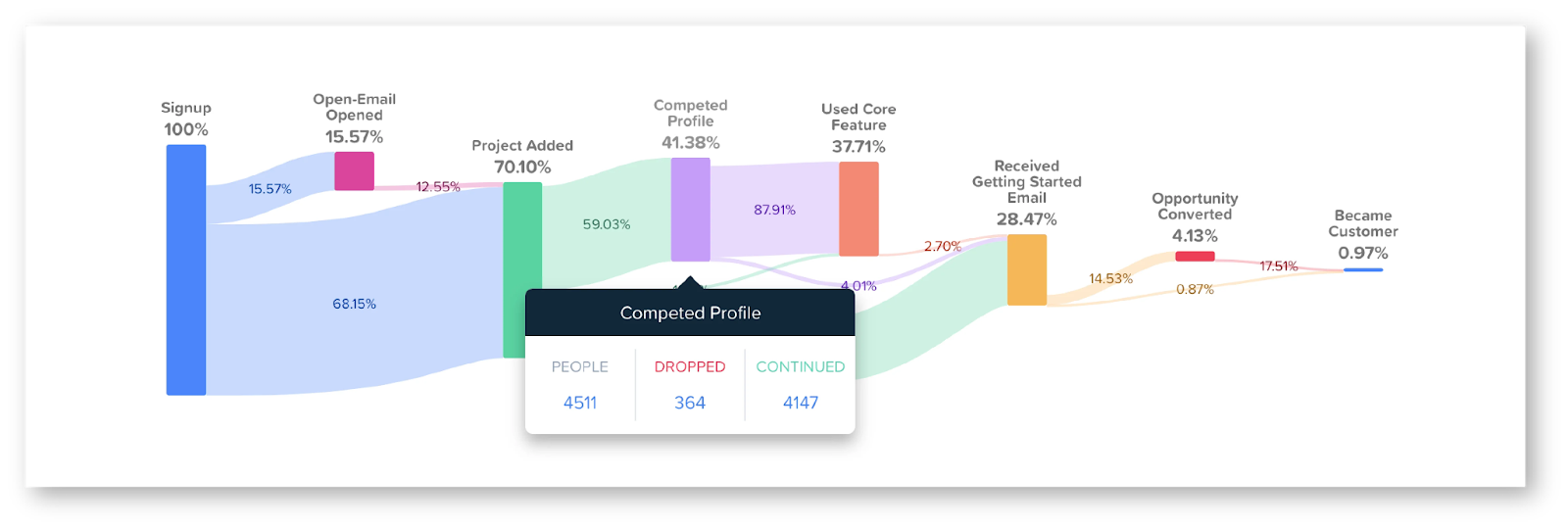 Behavior Analysis
Behavior Analysis
Why is Customer Behavior Analysis Important?
The goal of consumer behavior analysis is to uncover ways you can better suit your customers’ behavior patterns and increase your conversion rate.
Specifically, the results of buyer behavior analysis often help with things such as:
- Predicting customer value. The better you understand your customer segmentation, the more easily you’ll be able to optimize your operations to focus on your most profitable customer segments.
- Personalizing customer experience. When you understand the buying behavior of your customer base better, you can build bespoke customer journey maps for your most profitable customer segments to give them a more targeted, optimized-for-them experience, which will increase conversions.
- Improving customer retention. Understanding your behavioral data will provide deep customer behavior insights to help you identify what brings existing customers back, thus increasing customer satisfaction and reducing customer churn.
This kind of customer analytics might ultimately point towards a shift in your digital marketing strategy, some tweaks to your product, changes to customer service, or something else entirely! Every business is different, so it’s impossible to say what your customer behavior analysis might uncover.
At the same time, though, the benefits of customer behavior analysis are universal. Any business will benefit from understanding its customers better.
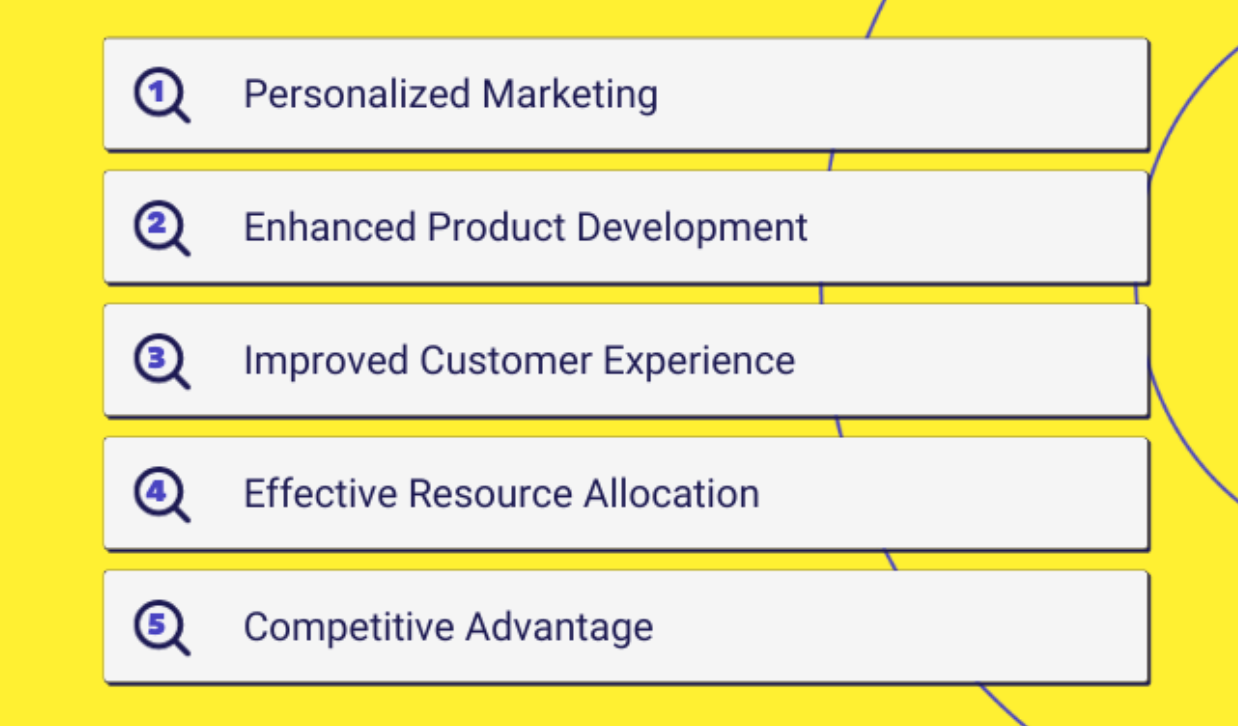 Image Source: Door Finder
Image Source: Door Finder
As you come to understand buying behavior better, you’ll likely discover lots of ways your company can optimize its approach.
Now that we understand what consumer behavioral analysis is and why it’s so beneficial, let’s dive into the nitty-gritty of how to actually conduct one so we can glean some actionable insights!
How to Conduct a Customer Behavior Analysis:
Before beginning, it’s probably a good idea to review your customer journey stages. Throughout this analysis, it’ll be helpful to collect customer data from all of these stages, so it’s important to be familiar with them!
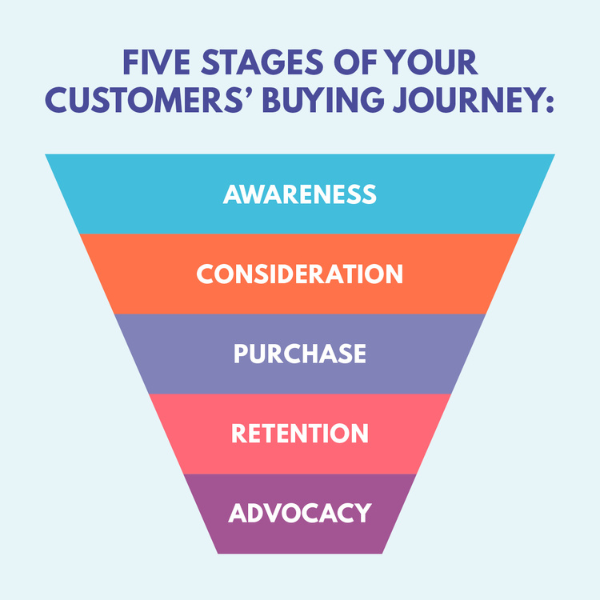
Image Source: WatchThemLive
1. Break Your Audience Into Segments
The goal here is to identify major groups that visit your website and/or purchase your product and get as deep an understanding as possible of the differences between each customer segment.
Also Read: Customer Retention Metrics
This begins with looking at demographics in your customer data and marketing funnel. Even the basic data you can get from Google Analytics can provide a start. Where are your users coming from? How old are they? What kinds of devices are they using to browse your site?
You don’t want to just look at web analytics.
Go deeper: What are their professional backgrounds? What media do they consume? Where else do they shop? What social media do they use? How did they find you? How soon after they discovered your company or product did they make a purchase?
There are consumer behavior analytics tools that can help you get at some of these answers, but qualitative research methods like customer surveys and interviews are extremely valuable for getting customer feedback.
When thinking about segmentation, remember that the most important segment is probably your most valuable customers, so it can also be a great strategy to start by identifying those people and work backward from there.
Who are your most valuable customers, and what do they have in common? Metrics like customer lifetime value, average purchase value, frequency rate, etc. will help identify your best customers.
That said, don’t ignore other segments entirely! There might be a more valuable audience of consumers coming to your site but not converting because you’re not highlighting the right selling point for them.
In other words, your customer acquisition, marketing, or product strategy might be leading you to miss potential customers. This brings us to the step that follows segmentation:
2. Identify Selling Points for Each Segment
Once you’ve identified your most important consumer segments, you need to understand why they’re buying. What’s driving that decision?
Qualitative research techniques such as user interviews are important here because they provide answers to the questions that may not be available in your customer behavior analytics.
You need measurable customer data on user behavior.
Moreover, you want as much detail as possible about why and how individual customers made their decisions, and that’s something you can only get by talking to them.
For example, did they have an urgent problem that your product solved, or was it more of a spontaneous purchase? Did they consider or perform market research on competitors? How did they feel about the pricing? What was their customer service experience like?
Knowing the answers to these kinds of questions will help you identify the unique selling points of your product that are most likely to appeal to each audience of consumers, which will then enable you to tailor and target your marketing content accordingly while making informed decisions.
3. Collect As Much Data As Possible
The previous step was about getting qualitative insights from customers, but once you’ve got that, it’s time to bring in as much quantitative data as possible.
This is where data analytics skills come into play. As a marketer, hopefully, you’ve already got some of those, but data analysts and analytics platforms and tools can be helpful here, too.
What data? Anything and everything you can get. If you’ve done any customer journey analytics or cohort analysis, that buying behavior data will be very relevant here, as will any other data you have on consumer behavior individually or in aggregate.
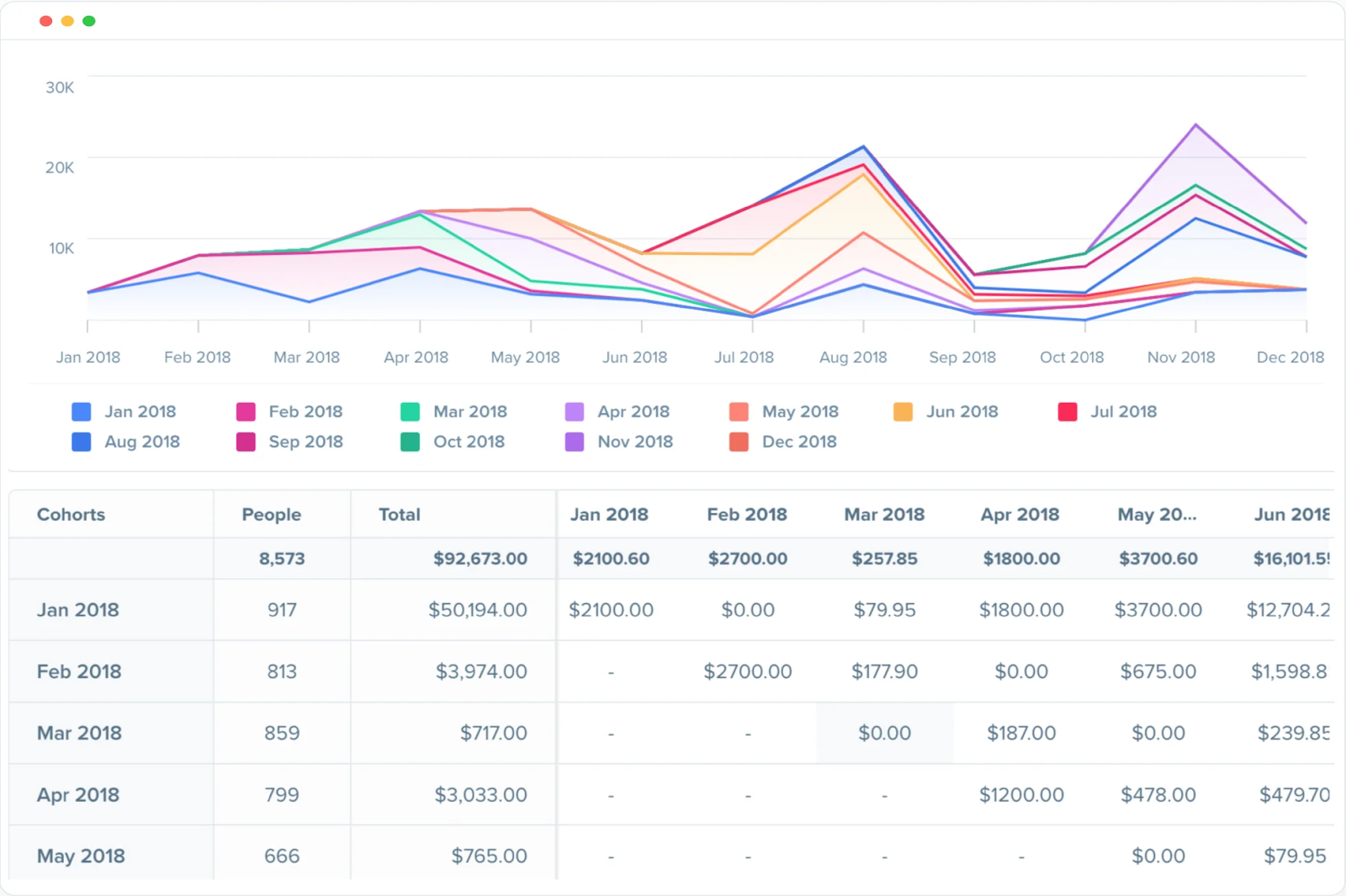 Image Source: Woopra
Image Source: Woopra
Any behavioral analytics data you may have will be relevant. All marketing analytics data should be collected as well, including all customer engagement data from both paid and organic channels.
You shouldn’t limit yourself to just company-specific data, though. Research what industry data is available, and scrounge any data you can on competitors, too.
Having industry/market data, quantitative company data, and qualitative data points will give you a great foundation from which to conduct your analysis on customer interaction, customer experience, customer retention, and more.
4. Check the Numbers Against Your Qualitative Data
Now that you’ve got all of your data, it’s time to start doing the real customer behavior analytics work. Look for trends and valuable insights in the quantitative data, and compare those to your qualitative data and your customer journey map.
In all likelihood, comparing these things will highlight some immediate areas worth focusing on.
But if you’re stuck, these are questions to ask for a good starting point:
Which of your user segments are buying from you? What are repeat buyers? Which marketing channels are working for which segments?
Do the answers to these questions sync with what you’ve seen in the data from the broader industry, or with what customers told you in surveys and interviews?
5. Make Changes Accordingly
The results of your analysis in step four will almost certainly suggest changes and optimizations you can try to improve the customer experience. So the next step is to try them! Insights you’ve discovered should be directly applied to your marketing plan.
For example, with customer behavior analytics, you discover a segment with huge customer loyalty: they share some demographic traits, come to your site from third-party review sites, and use Instagram heavily.
You could use this information to create an Instagram branding campaign aimed at their demographic that stresses the best selling point for them (your superior reviews on third-party sites).
You could also optimize your marketing copy on the most popular pages these consumers touch.
Of course, that’s just a simple example. Your analysis may lead you to something more sophisticated, like using predictive analytics to target certain user segments at certain times and serve them with the most relevant-to-them content, ads, and products.
6. Analyze Your Results and Repeat!
The final step of any consumer behavior analysis is to keep analyzing! You should think of this as an ongoing process of optimization that shapes every marketing campaign, not a one-off activity.
Why? Because even if your product never changes, consumers will change, and so will the market.
Analyzing customer behavior now will suggest great optimizations for you to implement now, but customer behavior is influenced by lots of things; including social trends, competitor marketing, customer service, economic forces, and much more.
The only way to be sure you truly know your customers and the consumers in your market is to keep in regular touch through ongoing consumer behavior analytics in both qualitative and quantitative forms.
Optimize for Conversion & ROAS Now! Explore Woopra in a demo and enjoy a 2-week free trial: https://www.woopra.com/demo
Customer Behavior Analysis Tools
If that sounds like a lot of work, don’t worry! Thankfully, there are some amazing tools out there that are designed to help you build a great customer journey through a better understanding of consumer behavior data. Here are a few of them:
1. Woopra
Woopra is an online platform that offers end-to-end customer journey analytics. It makes answering questions like “Which channels are driving signups most efficiently?” and “How do customer support tickets impact our NPS?” easy through interactive dashboards.

It tracks a ton of marketing data and builds it into attractive visual reports that you can access and understand without having to write confusing SQL queries or do any data wrangling on your own.
2. Hotjar
Hotjar is a valuable tool for analyzing what customers are actually doing on your site.
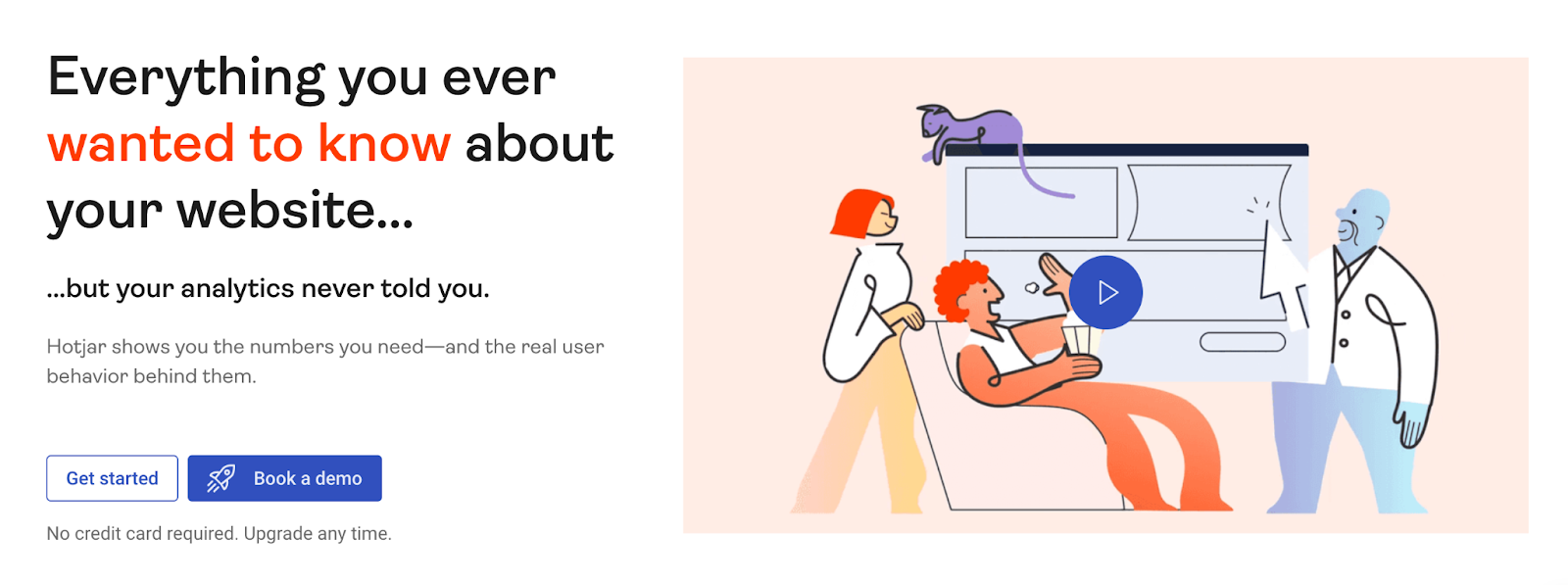 Image Source: Hotjar
Image Source: Hotjar
You can use it to build heat maps that highlight where customers are focused on each page, and you can also get really granular and watch individual visitor sessions to see exactly what people are doing.
Along similar qualitative lines, Hotjar also includes visitor surveying and polling tools so that you can learn more about why your customers do what they do by asking them.
3. Brand24
Brand24 is a brand monitoring platform that’ll help you collect some data about how customers are hearing about and interacting with your brand outside of your site and social media accounts.
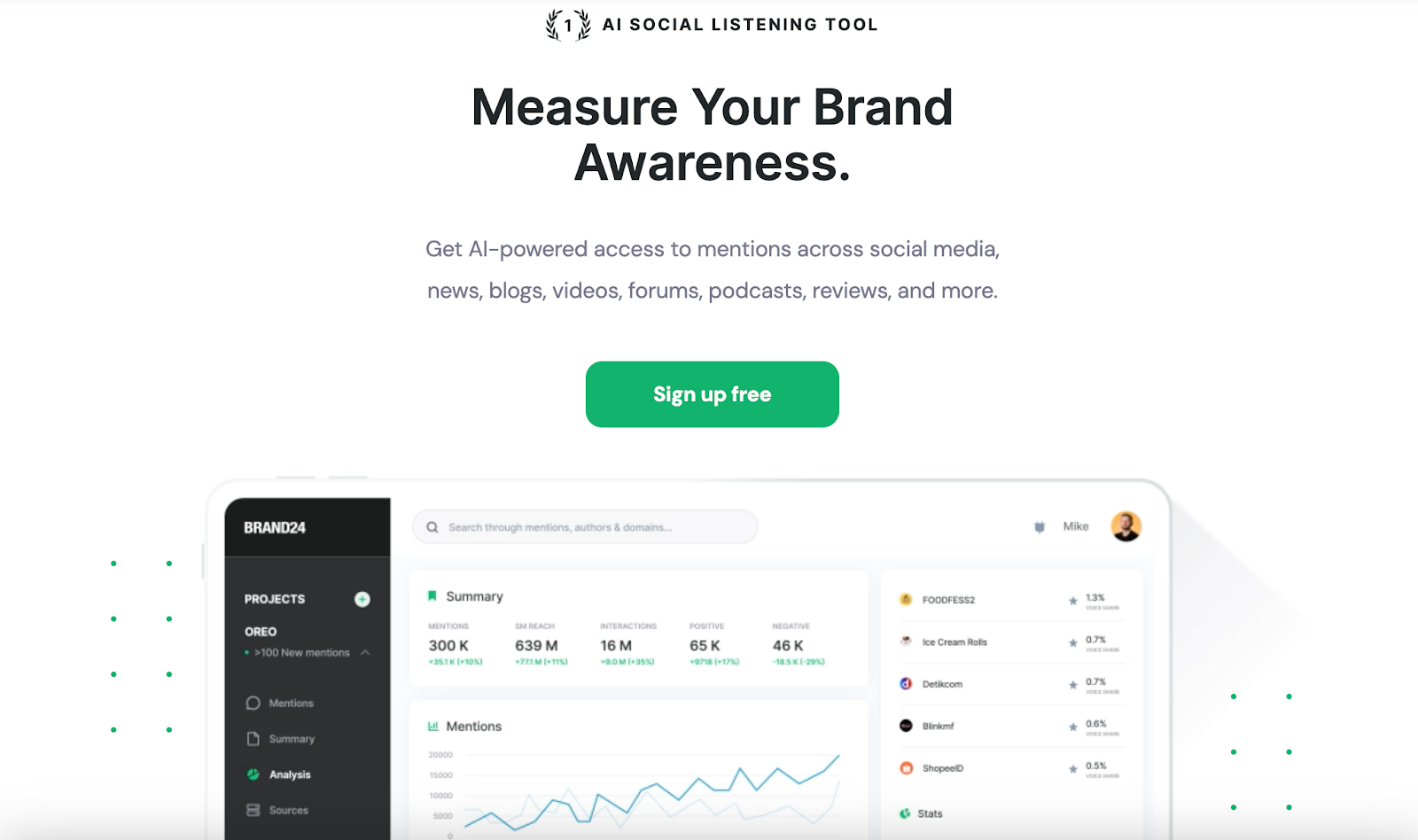 Image Source: Brand24
Image Source: Brand24
Before you start a consumer behavior analysis, you won’t know where or why your customers are making purchase decisions, so it’s important to collect external data like this to ensure you’re not missing important signals.
Whatever tools you choose, the most important thing is to take it seriously and give it time! Truly understanding your customers can revolutionize your business, but this kind of analysis is a process. Put in the time, effort, and budget, and your patience and diligence will be rewarded!



